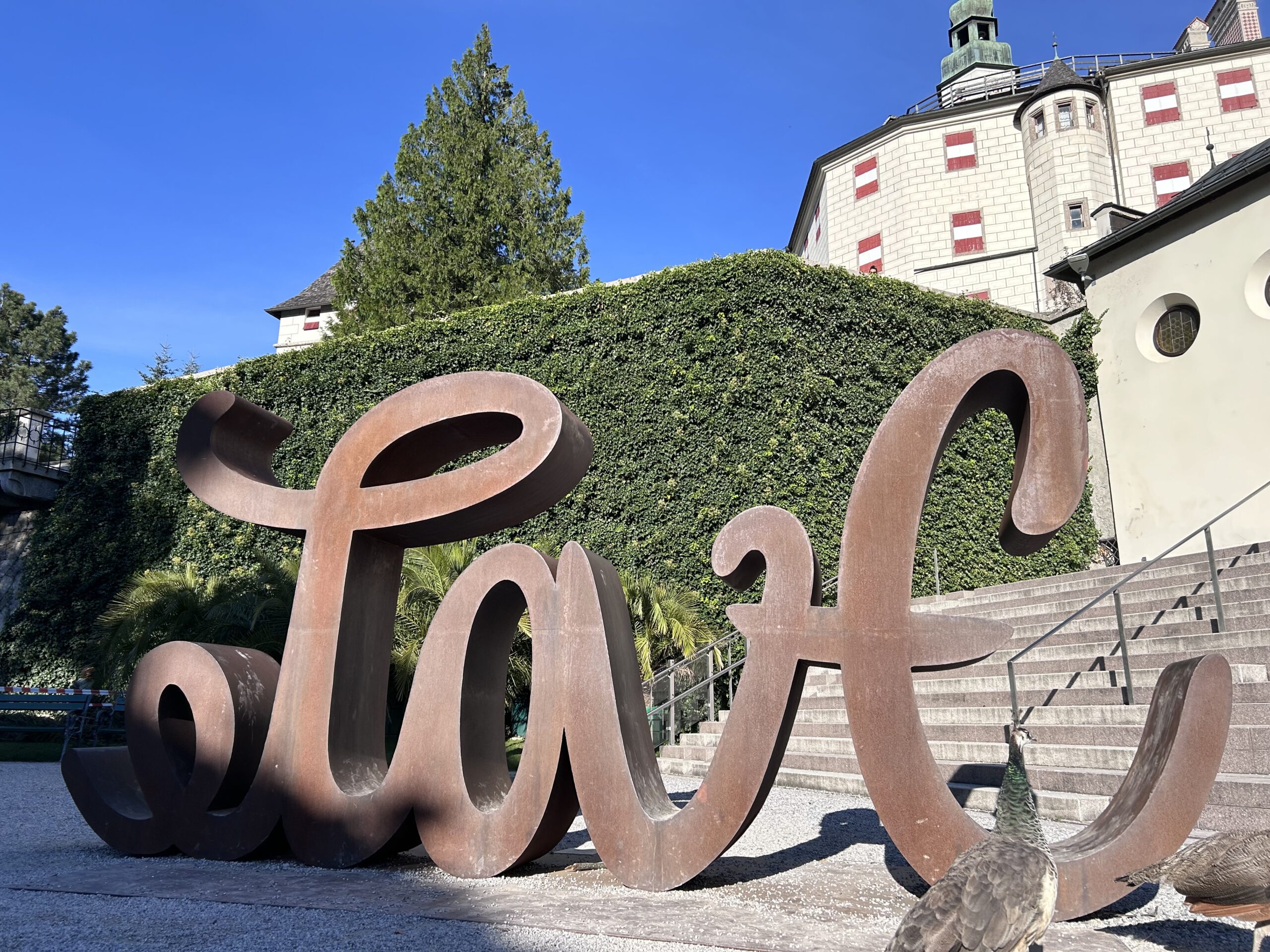Love/Hate Ambras Castle with peacock
Interesting in addition...
Theodor Prachensky: Beamter zwischen Kaiser und Republik
From the second half of the 1920s, large housing projects were realised to alleviate the greatest need of the many Innsbruck residents who lived in barracks or with relatives in cramped conditions. Entire new neighbourhoods were built with kindergartens and schools. Sports and leisure centres such as the Tivoli and the municipal indoor swimming pool were built. One of the master builders who made lasting changes to Innsbruck during this period was Theodor Prachensky (1888 - 1970).
As an employee of the Innsbruck building authority between 1913 and 1953, he was responsible for housing and infrastructure projects. The projects he realised are not as spectacular as the mountain stations of his brother-in-law Baumann. Prachensky's buildings, which have stood the test of time, often appear sober and purely functional. However, if you look at his drawings in the Archives of Architecture at the University of Innsbruck, you realise that Prachensky was more of an artist than a technician, as his paintings also prove. Many of his spectacular designs, such as the Sozialdemokratische Volkshaus in der Salurnerstraße, sein Kaiserschützendenkmal oder die Friedens- und Heldenkirche were not realised. Innsbruck is home to the large housing estates of the 1920s and 30s, the Warrior Memorial Chapel at the Pradl cemetery and the old labour office (Note: today a branch of the University of Innsbruck behind the current AMS building in Wilten) many of Prachensky's buildings, which document the contemporary history of the interwar period and the changing political and state influences under which he himself was influenced.
His biography reads like an outline of Austrian history in the early 20th century. Prachensky worked as an architect and civil servant under five different state models. The Austro-Hungarian monarchy was followed by the First Republic, which was replaced by the authoritarian corporative state. In 1938, the country was annexed by Nazi Germany. The Second Republic was proclaimed at the end of the war in 1945.
In 1908, Prachensky graduated from the construction department of the Gewerbeschule Innsbruck, now the HTL. From 1909, he worked partly together with Franz Baumann, whose sister Maria he was to marry in 1913, at the renowned architectural firm Musch & Lun in Merano, at that time also still part of the Austro-Hungarian Empire. In his private life, 1913 was a groundbreaking year for him: Theodor and Maria got married and started the private construction project for their own home Haus Prachensky at Berg Isel Weg 20 and the new family man started work at the Innsbruck City Council under Chief Building Officer Jakob Albert. Instead of having to work his way through the difficult economic situation in the private sector after the war, Prachensky worked in the public sector. The important projects influenced by social democratic ideas could only be started after the first and most difficult post-war years, characterised by inflation and supply shortages. The first was the Schlachthausblock im Saggen zwischen 1922 und 1925. Es folgten mehrere Infrastrukturprojekte wie der Mandelsbergerblock, der Pembaurblock and the kindergarten and secondary school in Pembaurstraße, which were primarily intended for the socially disadvantaged and the working class affected by the war and the post-war period. The labour office designed in 1931 was also an important innovation in the social welfare system. Since the founding of the republic in 1918, the labour office helped to place jobseekers with employers and curb unemployment.
His importance increased again during the economic crisis of the 1930s. Another turning point in Prachensky's career was the next change in Austria's form of government. Despite the shift to the right under Dollfuß, including the banning of the Social Democratic Party in 1933 and the Anschluss in 1938, he was able to remain in the civil service as a senior civil servant. Together with Jakob Albert, Prachensky realised the housing blocks known as the South Tyrolean Settlements under the National Socialists from 1939. Unlike several members of his family, he himself was never a member or supporter of the NSDAP.
His father Josef Prachensky, who went down in Tyrolean history as one of the founders of social democracy, probably had a great influence on his work as an architect and urban planner in line with international social democratically orientated architecture.
In addition to his father's political views, the disappearance of the Habsburg monarchy and his impressions of military service in the First World War also had an influence on Prachensky. Although he said he was against the war, he volunteered for military service in 1915 as a one-year volunteer with the Tyrolean Kaiserjäger. Perhaps it was the expectations placed on him as a civil servant during the war, perhaps the general enthusiasm that prompted him to take this step, the statements and the deed are contradictory. The war memorial chapel at the Pradl cemetery and the Kaiserschützenkapelle on Tummelplatz, which he designed together with Clemens Holzmeister, as well as his unrealised designs for a Kaiserjäger monument and the Friedens- und Heldenkirche Innsbruckare probably products of Prachensky's life experience.
After the Second World War, he remained active for a further eight years as Chief Planning Officer for the city of Innsbruck. In addition to his work as a construction planner and architect, Prachensky was a keen painter. He died in Innsbruck at the age of 82. His sons, grandsons and great-grandsons continued his creative legacy as architects, designers, photographers and painters in various disciplines. In 2017, parts of the cross-generational work of the Prachensky family of artists were exhibited in the former brewery Adambräu mit einer Ausstellung gezeigt.
